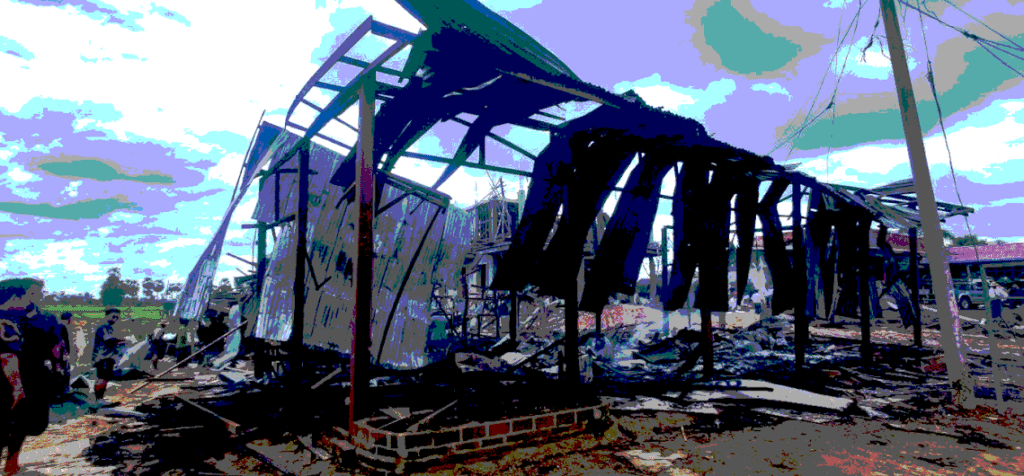Myanmar Spring Chronicle – View from September 27
(MoeMaKa, September 28, 2025)
The junta’s daily airstrikes that keep killing and injuring civilians
In recent days, a deeply distressing report emerged from Kan Htu Ma village in Sagaing Region: a junta airstrike killed eight civilians and injured many others. Around the same period, an air attack on Thandwe—one of the towns seized by the Arakan Army (AA)—killed one person and wounded others.
The AA has held areas such as Ngapali, Thandwe, and Taungup for many months, and the junta has been carrying out frequent airstrikes on territory under AA control. Current AA battlefronts lie along the borders between Ayeyarwady Region and the Rakhine coast, and between Bago and Magway Regions and Rakhine State. Inside Rakhine, only two places—Sittwe and Kyaukphyu—remain under junta control.
For that reason, recent air raids—like those that killed more than a dozen students in Kyauktaw weeks ago, and the latest strikes on Taungup and Thandwe—are attacks unconnected to any ground fighting. The junta appears to be sending a message that civilians cannot live peacefully under AA administration. Such actions amount to the continued commission of war crimes.
In the September 26 strike on Kan Htu Ma, a large crossroads village in Taze Township controlled by the People’s Defense Forces (PDF), eight civilians died on the spot and many were injured. The village is bustling, with many internally displaced people from Taze town also living there.
Some locals believe the military monitored the movements and residences of PDF members and then attacked from the air. Others suspect the military tracked SIM-card locations and used that to target the strike. Since the 2021 coup, even non–military-owned mobile operators like Mytel’s competitors have been compelled to provide user data—locations and call interception included—and appear to be doing so. With such surveillance capabilities, the military can obtain real-time location data from telecom companies. Resistance forces need to recognize these security and technical risks and adapt accordingly.
Airstrikes are not only taking lives; they also target homes, religious buildings, hospitals, and schools. People should exercise extreme caution in public facilities where both fighters and civilians might gather, to reduce risk.
Lately, air attacks have used not only conventional fighter aircraft, light reconnaissance planes, and military helicopters, but also gyrocopters—small fan-powered craft that carry about two people and can be fitted with light weapons and rockets. While they can’t carry bombs like fighters or light scout planes, they can swoop in quickly to attack contested areas or zones held by resistance forces.
Some resistance fighters are likely among the airstrike casualties. Yet reports consistently show that civilians are being killed on a daily basis.
For those living in conflict zones—displaced people and residents who cannot flee—the reality is a constant struggle to survive: staying alive under air raids while trying to earn a living and secure basic necessities.

